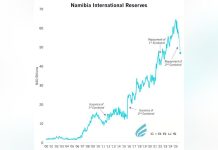Africa-Press – Namibia. CELESTINO FERREIRA QUALITY CONTROL ENTAILS the evaluation of a product before it is marketed. This is done by performing quality checks at the end of production and subsequently assigning the product to a quality grade, class, or category, or by simply passing or rejecting a product.
However, this process does not correct production failures or upgrade the quality of the product to be marketed. The grade or class of the product would therefore affect the price at which the product is sold, which means low-quality products are sold at a lower price and vice versa.
At times, products that are not fit for the market have to be discarded or destroyed despite the production cost of the low-quality and high-quality product being identical. Hence, quality control has the limited potential to increase the quality and efficiency of a production process.
Quality assurance, on the other hand, is the implementation of quality checks and procedures to immediately correct any failure and mistakes that can reduce the quality of the final product at any stage of production.
Standards in the agricultural value chain are designed to demonstrate that on-farm practices allow farmers to produce safe food products that meet food quality and safety standards.
Thus, the desired high quality of the final product is planned and obtained by employing quality management systems that guarantee the desired quality of the final products at every production step.
Should a production system have a well-documented quality management system (QMS) based on local or international standards, market access may be guaranteed because there is a system with records of good quality and safety practices.
Consumers and stakeholders need assurance that the process and system objectives include customer satisfaction, continual improvement of processes, products, services, and the working culture of an organisation.
The Namibian Agronomic Board (NAB) keeps track of producers and trends of expected harvests of all controlled horticultural and agronomic products in the country. This intelligence is intended to benefit traders in forecasting the availability of fresh produce in the country.
It also encourages traders and agents to sign contracts with producers as a way to trigger a more competitive environment within the agronomy and horticulture value chain.
This means the marketed fresh produce needs to meet the quality standards and specifications of consumers. This is evident from the increase in consumer demand for high-quality fresh produce globally.
Consumers expect their food to be handled, packaged and transported with the highest standards of quality and hygiene in a clean and environmentally friendly manner.
Consumer confidence is crucial for maintaining demand. Therefore, systematic quality monitoring at farm level is necessary for ensuring food quality and safety.
Through quality assurance and quality control measures, systems are implemented to ensure that quality standards are met at all times. At times, quality standards are set as deliberate barriers of trade to create a biased preference for certain producers or markets.
The United Kingdom, for example, has one of the strictest food safety and quality standards in the world, and these high-quality standards are perceived as deliberate market barriers to trade.
However, in Namibia table grape and date producers have been able to penetrate such markets due to adequate management systems which include international accreditation and certification.
In the agriculture fraternity, some important standards include GlobalGAP, ISO 22000, HACCP, ISO 17025, ISO17020, GMP, and ISO 9001. Thus, it is important to maintain a high level of quality assurance and quality control at all times.
Systems in food-safety monitoring include the testing of produce or meat for residues as a quality-control measure, while the implementation of residue avoiding production procedures at farm level is quality assurance.
The testing of products for salmonella prior to their marketing and consumption is quality control, and the implementation of on- and off-farm salmonella-reducing measures as standard operating procedures is quality assurance.
In the absence of quality control and quality assurance systems, treatment and/or quarantine regimes may be used to get rid of critical quarantine pests, and to monitor the presence of communicable zoonotic diseases.
For example, fruits may undergo cold treatment before they exit the northern communal areas in Namibia, and animals are quarantined before exiting these areas to allow access into markets south of the veterinary cordon fence (redline).
A holistic approach of quality control, quality assurance and corrective action measures will assist in securing both national and international markets.
For More News And Analysis About Namibia Follow Africa-Press






